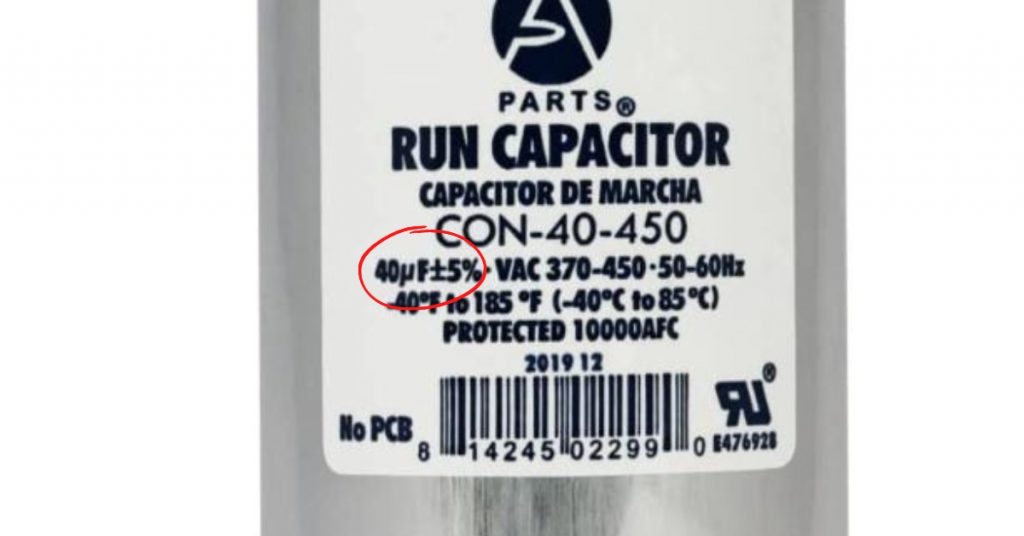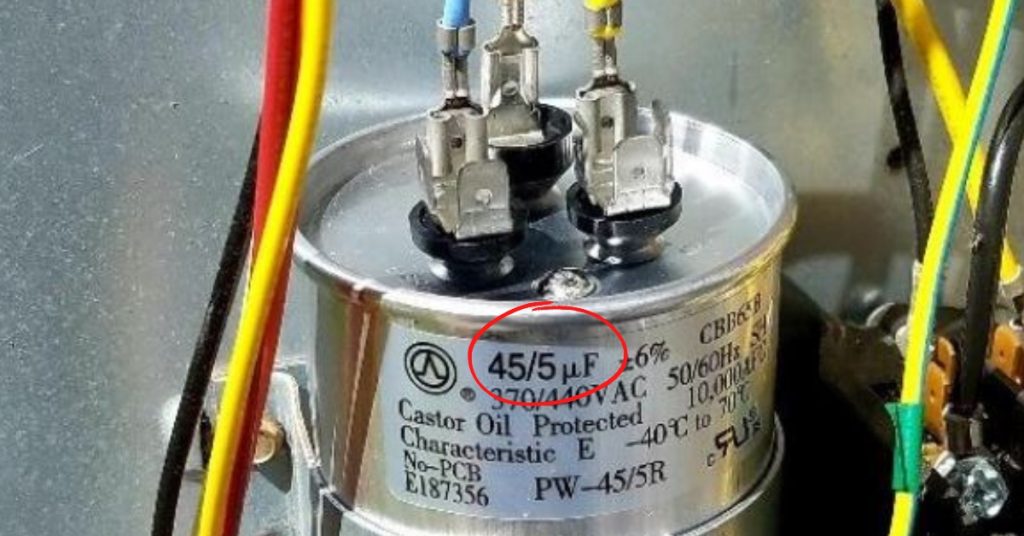
Start and run capacitors are distinct electrical components used in air conditioning and other electric motor-driven systems, each serving specific purposes. Understanding the differences and applications of these capacitors is essential for maintaining and troubleshooting such systems.
Start Capacitors
- Purpose: Start capacitors provide the initial electrical boost required to start the motor in AC units and other appliances with high starting torque.
- Characteristics: They have a higher capacitance rating but are used only for a short duration during motor startup.
- Design: Start capacitors are designed to provide a quick burst of energy and often have a larger physical size.
- Usage: Commonly found in single-phase AC motors, especially in devices with compressors, like refrigerators and air conditioners.
Run Capacitors
- Purpose: Run capacitors help maintain a constant electrical phase shift, ensuring efficient and continuous motor operation once the motor has started.
- Characteristics: They have a lower capacitance rating but operate continuously while the motor is running.
- Design: Run capacitors are designed to handle continuous electrical stress and have a smaller physical size compared to start capacitors.
- Usage: Typically used in single-phase and three-phase AC motors to improve motor efficiency and power factor.
Start vs Run Capacitors: The Differences.
After the brief introduction on the basics of start and run capacitors above, let us now look at the main differences between start and run capacitors in more detail.
| Aspect | Start Capacitors | Run Capacitors |
|---|---|---|
| Purpose | Provide an extra boost to start electric motors | Sustain and maintain the running of electric motors |
| Design | High capacitance, but lower voltage rating | Lower capacitance, but higher voltage rating |
| Function | Provide a jolt of energy to start the motor | Maintain a steady current flow during operation |
| Voltage Tolerance | Generally rated for higher voltage tolerance | Generally rated for lower voltage tolerance |
| Duration of Use | Intended for brief use during motor startup | Designed for continuous use during motor operation |
| Size | Typically larger in physical size | Smaller in physical size |
| Discharge Time | Discharges quickly after motor startup | Discharges gradually after motor shutdown |
| Applications | Commonly used in single-phase motors and compressors | Used in various motor applications |
1. How they Work
The reason we use capacitors in HVAC and other industries is because the power from the supply lines is usually not enough to run and maintain the smooth running of the motors.
Usually, a motor will need 1.5 times the voltage supplied by the power line. Since homes are connected to 240 volts of power, you will notice that most capacitors have a minimum voltage rating of 370 (240V multiplied by 1.5 is 360V but most manufacturers prefer 370V).

That is why HVAC motors and other motors need capacitors to work. The capacitors provide the initial powerful jolt of electricity needed to start and run the motor. That also explains why we need a start and run motor.
When the thermostat calls for cooling or when the motor simply needs to start rotating, the start capacitor sends current to the motor’s start windings. The current creates a magnetic field which provides the motor the torque it needs to start rotating.
As I have already mentioned, start motors are not designed to run for long. As soon as the motor has picked up speed, the start capacitor and start winding are disconnected and the main winding takes over.
Start capacitors are used in split-phase motors (single-phase induction motors which have the stator with a starting/auxiliary winding and a main/running winding) because such motors cannot generate a magnetic field on their own.
Run Capacitors on the other hand are used to supply the motor with the required current to keep it running. Run capacitors are used to maintain the required charge in a motor to ensure that it runs smoothly.
Run capacitors stores/accumulate electric charge and only release it to the circuit when it is needed. As such, run capacitors are continuously in use while start capacitors disconnect from the circuit as soon as proper motor speed has been gained.
A run capacitor works by creating a current to voltage lag in the detached start/auxiliary winding of the motor. The current creates a magnetic field strong enough to keep the motor running optimally/efficiently.
Since run capacitors are designed to work continuously (for a long time), they do not fail as frequently as start capacitors.
2. Capacitance

There are 2 ratings which are used to identify capacitors. They are voltage and capacitance. Voltage simply refers to the amount of electric current flowing through the capacitor. It describes how forcefully the current is moving through the capacitor, and is also known as potential difference.
On the other hand, capacitance is simply the amount of electric current that the capacitor can hold or accumulate. It is measured in farads but for capacitors specifically the capacitance is measured in microfarads.
Start capacitors have a higher capacitance than run capacitors. To be precise, run capacitors have a capacitance of as low as 5 microfarads while start capacitors have a capacitance of more than 70 microfarads.
It is easy to understand why start capacitors have a higher capacitance than run capacitors. The torque required to get the motor from an idle position to the point where it is running is more than the torque required to maintain it in the running process.
It is like trying to roll a barrel full of liquid. You need a lot of force in the initial few seconds but as soon as it starts rolling you need less effort to keep it moving.
3. Applications
Not all motors need a start capacitor. That is especially the case in the air conditioning industry. Why is that the case though?
We use start capacitors in motors which need a high amount of torque to start. For instance, in the case of a split-phase electric motor we need a start capacitor. The start capacitor produces a rotating magnetic field which creates the needed phase difference.
If your HAVC outside unit has both a start and run capacitor, the run capacitor will come in the form of a hard start kit. The kit disconnects the capacitor from the circuit after the compressor motor has started.
Run capacitors are used in permanent split capacitor motors commonly known as PSC motors. PSC motors use a capacitor in the auxiliary winding to increase the current lag between it and the main winding. Both the auxiliary and main winding remain connected to the circuit the entire time the motor is running.
PSC motors are commonly used in HVAC systems. As such, it is highly likely that your air conditioner does not have a start capacitor.
Dual Run Capacitors
Dual run capacitors are used in HVAC systems. An HVAC system will either have a 2 single capacitors (start and run capacitors) or a dual capacitor. Instead of having 2 single capacitors and in the interest of saving space, dual capacitors are now more preferred.
Unlike single capacitors which have 2 terminals, dual capacitors have 3 terminals:
- C – Common
- H/HERM – Hermetic compressor
- F- Fan
Dual capacitors also have 2 capacitance ratings, something like 45/5 µF. The large value (45 µF in this case) would be connected to the compressor while the 5 µF will be connected to the fan.

If you have a 2 single AC capacitors and one of them fails, an HVAC technician will most likely recommend replacing both with a dual capacitor. Apart from saving space, dual capacitors are also easy to replace.
Can a Run Capacitor Be Used a Start Capacitor?
Yes. A run capacitor can be used as a start capacitor. There is however one problem. For you to use a run capacitor as a start capacitor, the capacitance of the run capacitor needs to be the exact same as that of the start capacitor.
Usually, the capacitance of a start capacitor in a system is usually about 8 times that of a run capacitor. It can therefore be a challenge to get a matching run capacitor.
What you should however not to do is use a start capacitor as a run capacitor. Start capacitor are designed to be used for a second or two but not continuous use.
Wrap Up
And basically those are the differences between a start and a run capacitor. If you need to change your AC capacitor, it is not difficult to do it on your own but that DIY is not recommended since it is dangerous.
Even when you have disconnected your outside unit from power supply, the capacitor could still be storing a high charge and touching the terminals can result in electric shock. Such a job is best left to a licensed technician.





